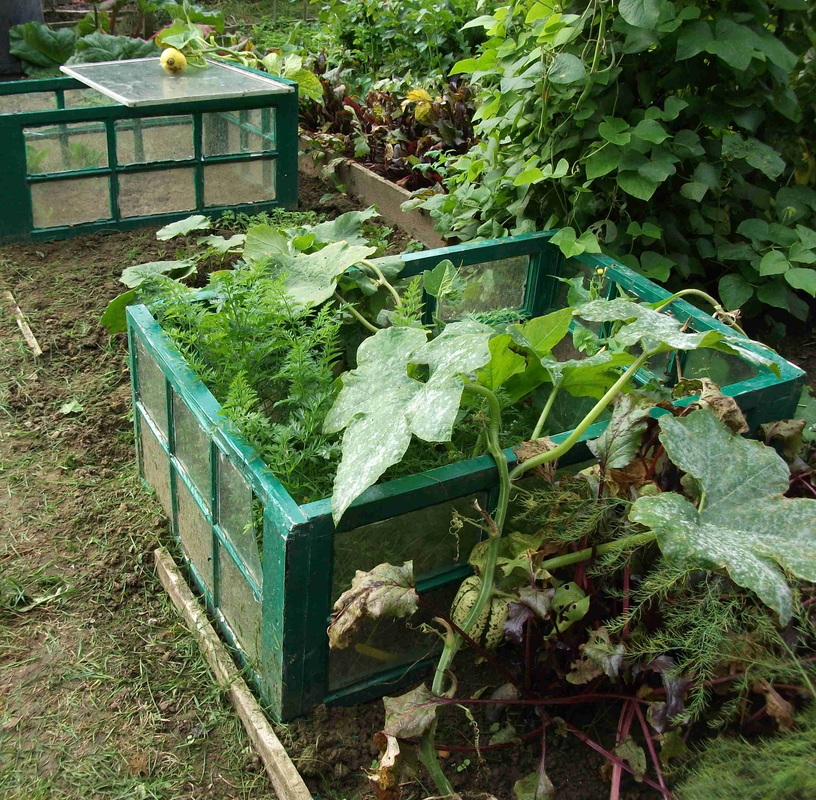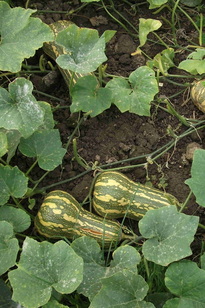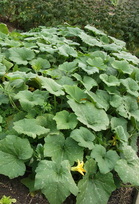| It's time to sow seeds of courgettes, marrows, cucumbers and squash - the family known as the 'Curcurbits' (from the Latin for Cucumber). Use little individual pots and put one or two seeds in each. (If both germinate you'll have to sacrifice one by cutting it off). This family doesn't like having its roots disturbed by transplanting. | All the curcurbit family benefit from extra warmth |
| Put your seeds to germinate in a heated propagator, a warm greenhouse or a sunny windowsill. Keep the compost moist at all times. Meanwhile, start to get the ground ready - those plants will be quick to germinate and alarmingly fast-growing. All the curcurbit family like the same conditions; good drainage, rich soil and a cool moist root-run. |
Pile the soil to one side. Fill the trench with home-made compost from your compost heap. It can be as rough as you like, not the perfect fine brown stuff you see on TV but the mixture of half-rotted cabbage stalks and old rubbish that we actually get in the real world - it all goes in. Bring it up level with the soil surface if you have enough compost!
Now cover the compost with the soil which you dug out. Smooth it off to a long mound with a flattened top.



 RSS Feed
RSS Feed
